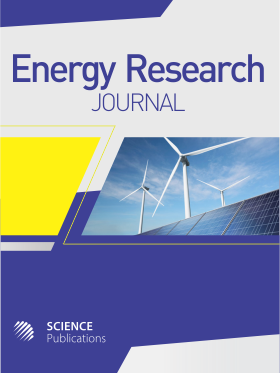Utilization of Rumen Content by Indigenous Microorganisms in a Modified Anaerobic Digester
- 1 Bayero University, Nigeria
- 2 BUK, Nigeria
Abstract
The current work was designed to assess the effect of modification of model digester on the kinetics that affects efficiency in biogas generation using bovine rumen content as the feedstock. A biogas plant consisting of conventional and modified fixed-dome digesters (each with 2 m3 capacity) was established; and bovine rumen content was used as feedstock. Standard methods were used to determine the kinetic (physicochemical and microbiological) parameters. Identification of fungal and bacterial species involved in the process was carried out by genomic study of the 18S rRNA and 16S rRNA regions, respectively; amplified using universal forward and backward primers for fungi (NS1/NS4), bacteria ((515F/926R) and archaea (Met86F/Met140R); submitted to GenBank and analysed using Blast Programme at National Centre for Biotechnology Information website. A mass balance approach was used to estimate the theoretical gas yield from the total solid/volatile sold lost. It was found that the temperature in both modified and conventional digesters was uniform throughout the hydraulic retention time, between 32 to 34.5°C, indicating a mesophilic range. The pH level was found to be lower in the modified digester compared to the conventional digester, indicating higher accumulation of organic acids. The mean total solid was found to drop from 12.49±0.53 to 3.82±0.21 in the modified digester after digestion, while this was from 13.30±0.4 to 6.69±0.16 in the conventional digester. The mean volatile solid drops from 66.67±1.62 to 36.13±0.27 in the modified digester after digestion, while it was from 69.94±1.54 to 54.23±1.33 in the conventional digester. The theoretical biogas yield was higher in the modified digester (87 mg/l) compared to the conventional one (65 mg/l). The microbial counts were observed to be affected by the kinetic parameters in both the digesters. The organisms identified were: Lactobacillus acidophilus, Bacteroides nordii, Clostridium perfringens, Clostridium acetobutylicum, Proteus vulgaris, Methanosarcina sicilia, Methanosarcina mazei, Methanobrevibacter ruminantium, Fusarium solani, Fusarium graminearum, Aspergillus niger and Penicillium specie. Conclusively, the modified digester, under a manual stirring at 10 round/min, 3 times a day at an interval of six hours, has appreciably generated higher theoretical biogas yield after 8 weeks hydraulic retention time. The agitation of the slurry using the improvised stirrer in the modified digester has significantly facilitated the utilization of the bovine rumen content by the indigenous microorganisms. Modification of digester to enhance mixing of the feedstock should therefore be encouraged in household anaerobic digesters.
DOI: https://doi.org/10.3844/erjsp.2020.12.21

- 5,236 Views
- 2,439 Downloads
- 0 Citations
Download
Keywords
- Anaerobic Digestion
- Rumen Content
- Indigenous Microorganisms
- Modified Digester
